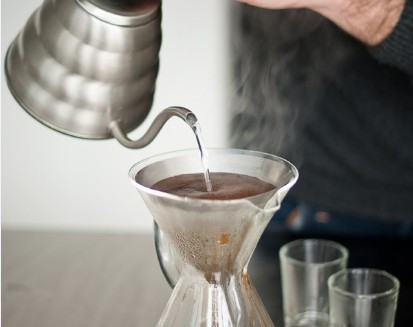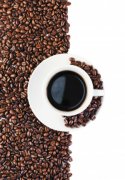Is coffee addictive? caffeine addiction
Coffee addiction problem
A university in England invited 300 volunteers to take part in the study. Coffee fans and non-coffee fans were divided into two groups. They stopped drinking coffee 16 hours before the test and observed the changes in their concentration. Sixteen hours after "abstaining from coffee", only coffee fans were allowed to drink coffee, while non-coffee fans were not allowed to drink coffee, but the results showed that coffee drinkers had the same concentration as non-coffee fans and were only at a normal level. Therefore, it is estimated that even if non-coffee fans drink coffee, it will not help to enhance their concentration or efficiency.
The researchers in charge of the investigation said that adenosine (Adenosine), which slows down in the human body, feels "refreshed" after drinking coffee because caffeine stops adenosine from entering cells, making it less likely to cause drowsiness. The study also pointed out that caffeine narrows the blood vessels, speeds up the blood flow and causes headaches. Some coffee fans who do not drink coffee will have headaches, irritability, muscle tension and nervousness and other uncomfortable reactions.
Does drinking coffee affect sleep?
Many people have the experience of being too excited to sleep after drinking coffee, because there is a conductive substance called adenosine in the body, which can control nerve activity. produce slow breathing, reduced mood, reduced gastric acid secretion and diuretic effects. On the other hand, caffeine will fake adenosine, making the body think that the effect of adenosine has already taken place, making you feel energetic, increase stomach acid, urinate more frequently, and naturally can't fall asleep. It is worth noting that the temporary awakening caused by this caffeine does not mean that physical strength has really been restored. In addition, everyone has a different metabolic rate of caffeine, so their sensitivity to caffeine varies, so some people don't feel that their sleep is affected after drinking coffee. Therefore, a cup of hot coffee after getting up in the morning can exhilarate the body and mind and make the mood more comfortable, while it may cause insomnia at night.
Will it cause calcium loss?
As people pay more and more attention to the problem of calcium loss and osteoporosis, there is also considerable doubt about coffee. As for the relationship between caffeine intake and osteoporosis, there is no direct evidence that caffeine causes osteoporosis, but some studies have shown that caffeine increases calcium loss. Therefore, it is suggested that coffee lovers should eat more high-calcium foods to supplement calcium, such as preparing cheese slices or cheese cake to enjoy with coffee, which can not only supplement calcium, but also make the coffee more delicious.
Coffee and Beauty
None of the studies have shown that caffeine and melanin in coffee are absolutely related to increased melanin or aging of the skin. On the contrary, a moderate amount of caffeine can speed up metabolism, promote digestion, improve constipation, and improve skin roughness. About caffeine can accelerate metabolism, there is a saying that coffee will accelerate calorie burning, to achieve the effect of weight loss, the theory is basically correct, but this calorie burning is not enough to cause weight loss. If sugar and cream are added to the coffee, the calorie calculation is even more inconsistent with the principle of weight loss.
Coffee is a good friend of fitness.
Another advantage of coffee is that it increases your physical strength, which helps you exercise longer and make it work better. Caffeine is an essential part of team sports because it enhances attention and response. Drinking too much coffee, coupled with intense exercise, may lead to tachycardia and excitement, causing insomnia, neurological disorders and other symptoms.
Drinking coffee often leads to sub-health.
The survey found that the phenomenon of sub-health among white-collar workers has been extremely common, about 98.8% have varying degrees of sub-health, among which people aged 26-30 years old have become the main force of severe sub-health, the proportion is as high as 64.2%. In particular, first-tier cities are firmly in the position of the champion of severe sub-health rate. Economic and emotional pressure, so that white-collar workers have to overdraw the price of health in exchange for success, leading to many social problems.

Important Notice :
前街咖啡 FrontStreet Coffee has moved to new addredd:
FrontStreet Coffee Address: 315,Donghua East Road,GuangZhou
Tel:020 38364473
- Prev

Analysis of Coffee pros and cons Coffee beans drink Coffee
Coffee tree is a small evergreen tree of Rubiaceae. Coffee for daily consumption is made from coffee beans combined with various cooking utensils, and coffee beans refer to the nuts in the fruit of coffee trees, which are then baked in an appropriate way. The taste of a standard cup of coffee should not be bitter, and a qualified barista will strictly carry out every step when making coffee.
- Next

Iced Coffee and Cold-brewed Coffee in practical Teaching
First, ice drop coffee, cold coffee actual combat teaching! What is ① iced coffee? What is the difference between ② chilled, cold bubble and ice droplets? How to extract ③ ice drop coffee? How does ④ make iced coffee at home? ⑤ ice drop appliance reward 01 what is ice drop coffee? Ice drop coffee water-drip coffee, also known as Dutch coffee (Dutch coffee). It is said to be because when
Related
- Beginners will see the "Coffee pull flower" guide!
- What is the difference between ice blog purified milk and ordinary milk coffee?
- Why is the Philippines the largest producer of crops in Liberia?
- For coffee extraction, should the fine powder be retained?
- How does extracted espresso fill pressed powder? How much strength does it take to press the powder?
- How to make jasmine cold extract coffee? Is the jasmine + latte good?
- Will this little toy really make the coffee taste better? How does Lily Drip affect coffee extraction?
- Will the action of slapping the filter cup also affect coffee extraction?
- What's the difference between powder-to-water ratio and powder-to-liquid ratio?
- What is the Ethiopian local species? What does it have to do with Heirloom native species?

